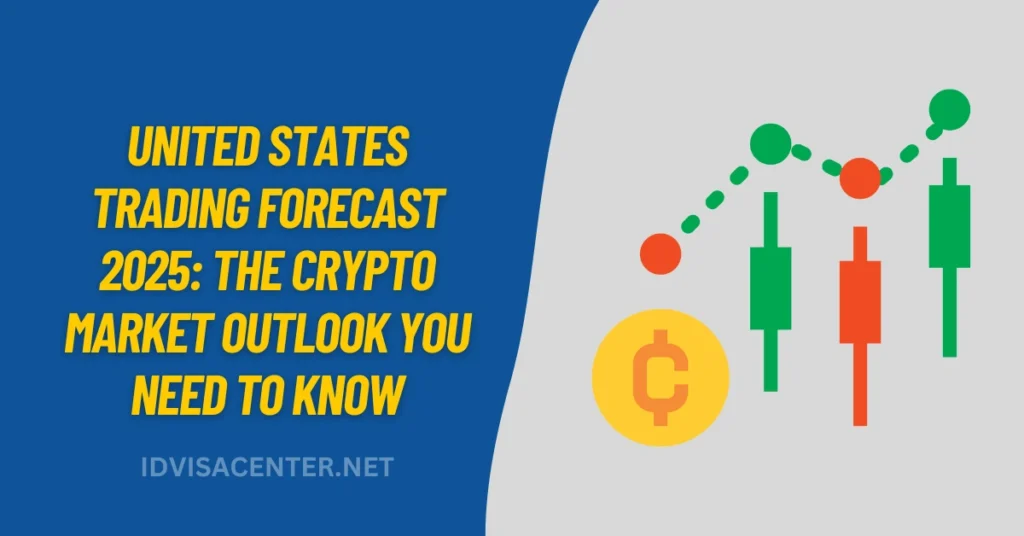United States Trading Forecast 2025: The Crypto Market Outlook You Need to Know
As we look ahead to the United States trading forecast 2025, one thing is certain—cryptocurrency will be a central player in shaping the financial landscape. With 2024 bringing increased adoption, institutional involvement, regulatory clarity, and the rise of blockchain-based technologies, investors are now eyeing 2025 with cautious optimism and renewed enthusiasm. In this in-depth forecast, we’ll explore the crypto market trends, economic indicators, regulatory shifts, and technological breakthroughs that are expected to influence U.S. trading activity in 2025.

A Look Back: Setting the Stage for 2025
Before diving into the future, it’s important to understand the momentum carried over from previous years. By late 2024, the crypto market had seen:
- The resurgence of Bitcoin, with prices nearing all-time highs
- Ethereum’s full transition to Proof of Stake and layer-2 scaling improvements
- The adoption of stablecoins in international trade and digital finance
- The emergence of DeFi 2.0 platforms
- Increasing regulatory compliance by major exchanges
These developments have set a solid foundation for what could be a breakout year in the United States trading forecast 2025, particularly within the crypto sector.
1. Crypto in Mainstream Finance: Integration & Expansion
One of the most significant predictions in the United States trading forecast 2025 is the full integration of cryptocurrencies into mainstream financial systems. In 2025, we expect:
- More U.S. banks offering crypto custody services
- Traditional stock exchanges listing tokenized assets and ETFs backed by Bitcoin and Ethereum
- Widespread adoption of Central Bank Digital Currencies (CBDCs) that coexist with decentralized crypto
- Growing partnerships between Wall Street institutions and crypto-native platforms
This hybrid financial model is likely to redefine how U.S. citizens invest, trade, and store their wealth.
2. Regulatory Clarity: A Double-Edged Sword
The regulatory framework for crypto in the U.S. is expected to mature significantly by 2025. The Securities and Exchange Commission (SEC) and the Commodity Futures Trading Commission (CFTC) are likely to finalize their stances on the classification of cryptocurrencies. Key expectations include:
- Clear guidelines distinguishing security tokens from utility tokens
- Enforced AML/KYC standards for DeFi protocols
- Legislation that provides consumer protections while encouraging innovation
- Tax incentives for long-term crypto holdings
While regulation will bring clarity and safety, it may also create barriers for smaller players and alter the decentralized ethos of the crypto space.
3. Bitcoin’s Halving Effect and Price Predictions
Bitcoin’s next halving, scheduled for early 2024, will have a delayed but powerful impact on the market, with its effects fully visible in 2025. According to the United States trading forecast 2025, analysts predict:
- Bitcoin could surpass $120,000 as supply dwindles and demand increases
- Institutional accumulation will further drive scarcity and valuation
- The halving will indirectly boost the prices of altcoins, especially those with real utility
Bitcoin’s performance will heavily influence overall crypto sentiment in the U.S. market and globally.
4. Altcoins & Web3 Tokens: Beyond Bitcoin
While Bitcoin dominates headlines, the United States trading forecast 2025 also sees major action in the altcoin and Web3 spaces. Promising sectors include:
- AI-integrated tokens (e.g., Fetch.ai, SingularityNET)
- Gaming & Metaverse projects (e.g., Decentraland, Sandbox)
- DePIN (Decentralized Physical Infrastructure Networks) tokens supporting real-world data like Helium or Render
- Layer-2 solutions (e.g., Arbitrum, Optimism) helping Ethereum scale
U.S. investors are becoming more educated and diverse in their holdings, fueling the next wave of decentralized innovation.
5. Stablecoins and Cross-Border Trade
One major trend expected to shape the United States trading forecast 2025 is the increased use of stablecoins in global commerce. U.S.-based stablecoins such as USDC and PayPal USD are likely to play a critical role in:
- Settling international trade deals
- Facilitating remittances
- Enabling real-time payments between businesses
The U.S. Treasury is also exploring stablecoins as a dollar diplomacy tool, maintaining USD dominance even in decentralized settings.
6. The Rise of AI-Powered Trading and Crypto Bots
As automation continues to reshape finance, AI-powered trading bots are expected to become a staple in the United States trading forecast 2025. These tools:
- Execute trades at ultra-fast speeds
- Utilize machine learning for predictive analytics
- Offer retail traders access to institutional-grade strategies
- Monitor decentralized exchanges (DEXs) for arbitrage opportunities
AI will not only boost efficiency but also change how markets behave, making price actions more reactive and volatile.
7. Potential Risks to Watch in 2025
While the forecast is largely bullish, it wouldn’t be complete without considering potential threats and challenges:
- Overregulation that stifles innovation or bans privacy-focused coins
- Security breaches on major DeFi protocols or centralized exchanges
- Macroeconomic downturns that force investors into risk-off positions
- Technological vulnerabilities like quantum computing impacting blockchain security
Mitigating these risks will be essential for sustaining growth and investor confidence in the crypto sector.
Conclusion: The United States Trading Forecast 2025 Signals a Crypto-Centric Future
From all indicators, the United States trading forecast 2025 is shaping up to be a monumental year for cryptocurrency. With improved infrastructure, broader adoption, regulatory clarity, and innovative projects pushing boundaries, the crypto market is poised to become a central pillar of U.S. trading activity.
Whether you’re a retail investor, institution, or blockchain entrepreneur, 2025 offers unprecedented opportunities—but only for those who stay informed and adapt quickly.
As the line between traditional finance and decentralized assets continues to blur, the crypto economy will not just coexist with Wall Street—it will redefine it.




